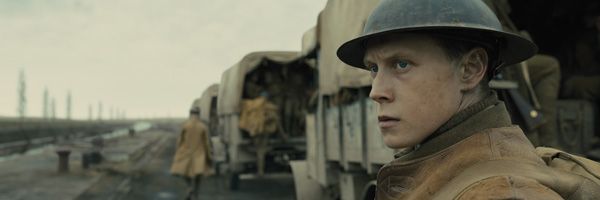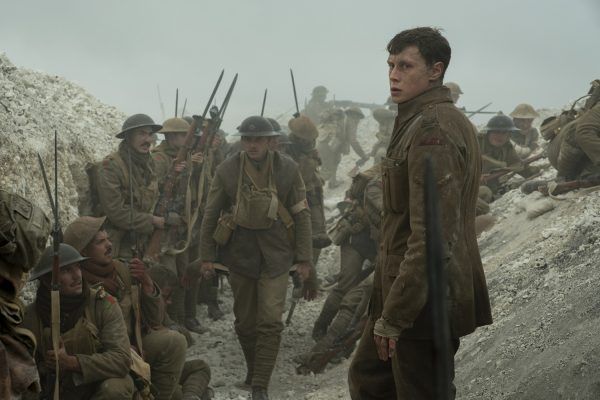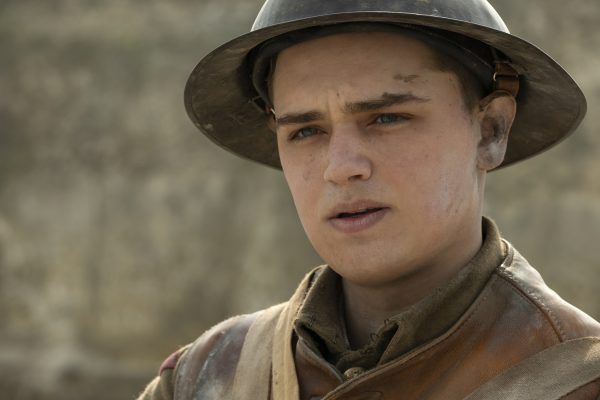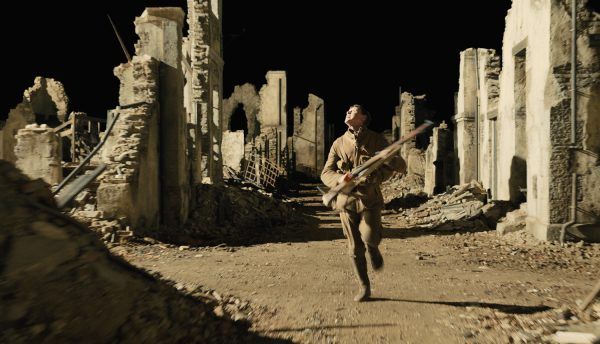Spoilers for 1917 follow below.
The World War I drama 1917 is not your typical war film. First off, the movie plays out entirely in real-time as if it’s contained in a single shot. Obviously, given the pyrotechnics involved and various location changes, it’s not all actually one shot, but making it all appear as though it’s one shot was no easy task. It challenged all involved, including director Sam Mendes, cinematographer Roger Deakins, and co-writer Krysty Wilson-Cairns.
But 1917 is also unique in that, because it plays out in real-time, there are no significant flashbacks to develop a character’s backstory, nor any “heart-to-heart” conversations that reveal what the characters’ lives are like back home. From the opening minutes of the film until the very end, we’re following Schofield (George MacKay) and Blake (Dean-Charles Chapman) on a breakneck mission to save 1600 soldiers.
In the final moments of the movie, however, a secret about Schofield is revealed that recontextualizes the entire ordeal. We know that Blake was hell-bent on saving the 1600 men because his brother was one of them, but unfortunately Blake lost his life along the way. Schofield persevered, taking more and more risks after Blake died, all to possibly prevent the soldiers from walking into an ambush with no guarantee he’d make it in time.
But during the film’s final scene, we get a look inside the container Schofield has been protecting this entire time. In it contains a picture of his wife and child. Yes indeed, Schofield did all of this at a potentially immense personal cost, making the sacrifices of those lost during World War I all the more palpable.
When I interviewed Oscar-nominated co-writer Krysty Wilson-Cairns about her work on the film, I asked how she and Mendes hit upon this particular story point and why they chose to reveal it at the very end of the movie. As she explains, it was all in service of being as realistic as possible:
“So the two big things you learn about Schofield, his name and the fact that he has a family, all come in the final five minutes of the film. And there were a bunch of reasons for us doing that. Partly, again, reality. He's spent at least six months with Blake, so he's not going to wake up in the morning next to Blake in that first scene and go, ‘Oh I'm missing my wife and child, my children.’ Because that's not how people speak. The same with Blake. He would never be like, ‘Oh I miss my mom. I hope she's alright and I wonder how my brother's doing.’ You know, it's just not a reality, not how we behave.”
Wilson-Cairns also pointed to the contrast between Blake’s emotionally extroverted personality and how Schofield keeps his emotions internalized throughout the film—up until the moment that Blake dies:
“And the other thing about Schofield is he's incredibly contained at the beginning of the film. He holds everything in. If you watch the No Man's Land scene again, you'll notice that Blake looks at everything. He looks at the dead horses, he looks at the dead Germans, he looks at the crows and the rats. His fear is him taking it all in, whereas Schofield, who's been there before, looks only ahead. He's only focusing on the next people he's got to get. He doesn't linger over the bodies, so he's really shot-off from the world. He keeps his family in that little tin. And when they survive the collapsing of the tunnels, he looks at it, but he can dare only look at it for a flash. He has to keep everything locked away because that's the only way he'll survive out there. He cannot think of himself as a father and as a soldier, because he would be too afraid to be a soldier because he wants to get back to his kids. To me, that felt very natural, felt pretty human and it allowed us to, with George, include every action of Schofield through the film.”
By the end of the film, however, Wilson-Cairns says Schofield has become a bit more like Blake:
“So we thought at the end, he's become a bit more like Blake. In a way, after Blake dies, he takes Blake on. Blake becomes a part of him. So when he goes through all that second half of the film, he's more like Blake than ever before. He takes chances, he runs, he does everything he can because he's made this promise to his dying friend. And so we wanted that last scene of the film to really get that he's just a tiny bit more like Blake there. Although he's still back against the tree, the way we found him at the very beginning, he's now a changed man. He's gone through something. And the fact that he can read that ‘Come home’ letter and not dissolve is sort of proof of that at a very character-driven level.”
Indeed the final shot of the movie mirrors the opening shot of the film, and is all the more impactful given that it comes at the end of journey during which we followed Schofield’s every waking hour on his quest to save thousands of lives. That he’s able to rest in peace is certainly indicative of how the journey has changed him, and it’s fascinating to hear Wilson-Cairns explain the thought process behind crafting the closing moments of this phenomenal film.
For more on 1917, check out my full interview with Wilson-Cairns on how she and Mendes wrote the movie right here.




